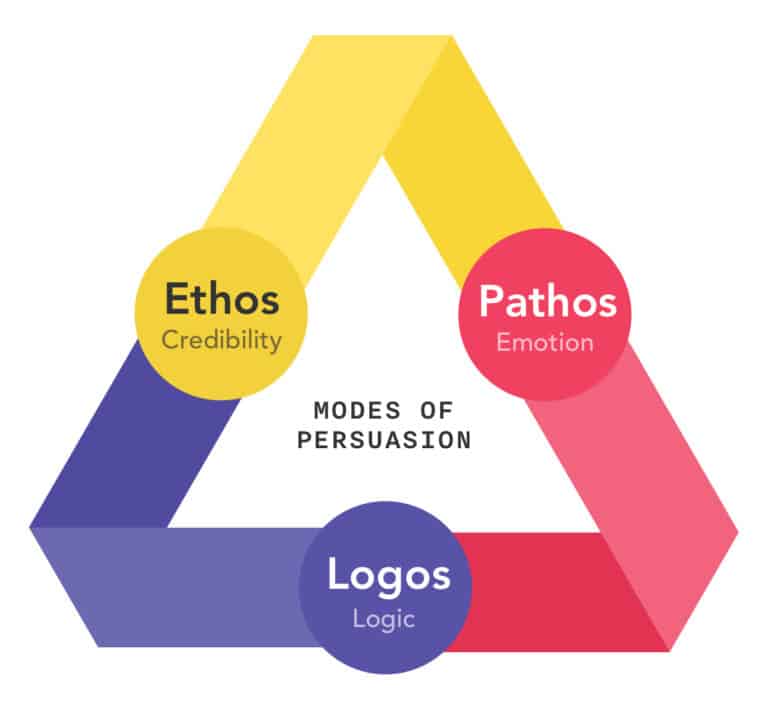
As the digital landscape evolves, and attention spans grow shorter, understanding the key elements that make videos go viral has become more crucial than ever.
The UGC industry may be fairly new, but the formula to create great UGC certainly isn’t. In fact, our go-to formula is an age-old theory that has stood the test of time.
While the term viral may seem like a recent phenomenon, the foundation of what makes content spread like wildfire can be traced back to ancient times. Before there was Ogilvy, there was Aristotle. The Greek philosopher cooked up a concept called the three ‘modes of persuasion’ that would have gone down an absolute storm on LinkedIn. His timeless pillars of persuasion form the backbone of not only compelling speeches and writings but also captivating videos that resonate with viewers on a profound level.
Whether you’re a content creator, marketer, or simply fascinated by the science of virality, get ready to uncover the formula behind some of the most talked-about videos in history.
 TABLE OF CONTENTS
TABLE OF CONTENTS
- WHAT ARE THE MODES OF PERSUASION?
- ETHOS
- PATHOS
- LOGOS
- HOW TO USE THESE IN UGC?
What Are The Modes Of Persuasion?
The modes of persuasion, also known as rhetorical appeals, are three persuasive strategies used to influence an audience and effectively communicate a message. In short, they offer a framework for understanding the three main ways we persuade people to do something.
These modes were first introduced by the ancient Greek philosopher Aristotle and are still widely recognized and employed in modern advertising. UGC included.
Here’s the line-up:
Mode of persuasion | How it works |
Ethos (Ethical appeal) | Persuading your audience by convincing them that your protagonist is credible |
Pathos (Emotional appeal) | Persuading your audience by appealing to their emotions |
Logos (Logical appeal) | Persuading your audience by using facts, logic, or reason |

Ethos
Ethos, the first of the three modes of persuasion, plays a critical role in advertising by establishing trust, credibility, and authority. In the realm of marketing, ethos focuses on presenting the advertiser or brand as a reliable and knowledgeable source. By invoking ethos, advertisers aim to win over their audience’s confidence and encourage them to believe in the authenticity of the message being conveyed.
When creating advertising, incorporating ethos involves several key elements:
✅ Expertise and credentials of the individuals endorsing the product or service. This can be achieved by featuring testimonials from industry experts or satisfied customers who vouch for the brand’s quality and reliability.
✅ Highlighting the brand’s track record of success, years of experience, or any awards and accolades received can further enhance ethos.
✅ Transparency and authenticity are also vital aspects of ethos in advertising. Brands that openly communicate their values, ethical practices, and genuine commitment to their customers can build a stronger sense of trust among their target audience.
Incorporating ethos into advertising fosters a sense of reliability, integrity, and authenticity, allowing brands to create lasting impressions and build loyal relationships with their customers.
How To Use Ethos in Your UGC Content
Positioning your content from the point of view as a satisfied customer who can vouch for the brand’s quality and reliability. Explain the pain point you’ve been suffering from and the search to find a solution.
Content that references having seen this product all over TikTok is a perfect example, providing much needed social proof.
Logos
Logos, another pivotal mode of persuasion, revolves around using logic, reason, and evidence to appeal to the audience’s rationality. We’re talking factual information, data, and logical arguments to persuade consumers about the benefits and superiority of a product or service.
This can include:
✅ Scientific research, statistics, case studies, or any relevant data that substantiates the product’s effectiveness or the brand’s superiority in the market.
✅ Logical reasoning can be applied to demonstrate why the product is the best choice for the consumers based on its features, quality, or value proposition.
✅ Presenting a problem-solution narrative can resonate with consumers on a rational level, illustrating how the product or service can address their needs and solve their pain points. This approach not only engages the audience but also reinforces the product’s practicality and utility.
As consumers become increasingly discerning in their choices, leveraging logos in advertising becomes an indispensable tool for brands seeking to win over their target audience’s rational minds.
How To Use Logos in Your UGC Content
If there’s a % in there, we’re talking about logos. 48% of customers said X, Y and Z. I increased my X by %. Logos.
Any narrative that runs through a logical problem and solution.
Pathos
Pathos, the third mode of persuasion, focuses on appealing to the emotions and sentiments of the audience. This creates a strong emotional connection with consumers, ultimately influencing their decision-making process.
When using pathos, the goal is to evoke powerful emotions that resonate with the target audience. This can be achieved through storytelling that tugs at heartstrings, triggers nostalgia, or addresses relatable life experiences. Emotionally charged narratives can deeply engage consumers, making the ad memorable and impactful.
Additionally, humor can be a potent tool in invoking pathos. Humorous ads can evoke laughter and joy, creating positive associations with the brand.
By tapping into emotions, advertisers can build an emotional connection between the brand and the consumer, fostering loyalty and long-term relationships.
🚀 Try The Formula
These age-old pillars of persuasion have proven their effectiveness throughout history and continue to shape the success of captivating videos in the digital era.
By combining these elements in UGC content creation, content creators, marketers, and brands can craft videos that resonate deeply with viewers, leaving a lasting impact and inspiring audiences to engage, share, and spread the message further.
So, the next time you’re creating a video, remember the time-tested formula of ethos, logos, and pathos. Understand your audience, appeal to their emotions, provide logical reasons to believe in your message, and establish your credibility to create compelling, shareable, and ultimately viral content. With these tools in your arsenal, you’ll be well on your way to unleashing the viral potential of your videos and captivating audiences worldwide.










